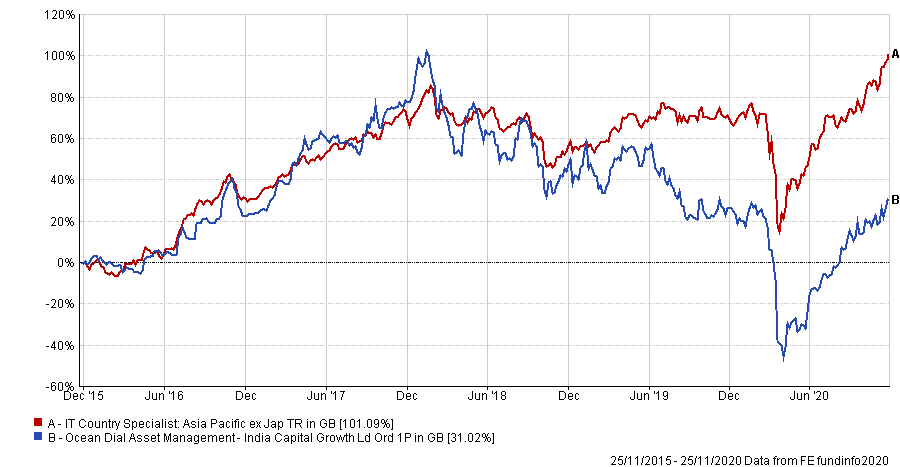It’s been a difficult year for India, as economic woes before the Covid-19 pandemic were compounded when nationwide shutdowns were announced to halt the spread of the coronavirus.
The government imposed one of the most stringent lockdowns, which caused a significant contraction on its economy and the country has struggled with rising cases of Covid-19.
However, David Cornell, who has managed the India Capital Growth fund since 2010, suggests that with a global recovery on the horizon, India is well primed to take full advantage of the opportunities 2021 will offer.
“The first fiscal quarter of the year was dramatic contracting 24.9 per cent,” said Cornell. “In fact, it was one of the biggest contractions around the world due to the harsh lockdown.”
But as the country has gradually begun to open back up, economic activity is almost back to pre-lockdown levels.
While Western governments were quick to bolster their economies with fiscal stimulus, Cornell said, India did not act in a similar fashion.
“The government has not really spent any money expanding its fiscal deficit in order to subsidise weak economic activity,” he said.
Globally developed markets in comparison have injected considerable levels of stimuli, with the US at roughly 11 per cent and the UK at 10 per cent.
“They’ve kept their powder dry,” he said. “They don’t have a social security system and want to keep that level of fiscal spending ready for when the economy fully opens up.”
The manager stated that the government wanted to avoid investing in infrastructure and job creation during lockdown, preferring to wait until the restrictions were eased and an economic recovery was building.
“As economic momentum recovers, the government will reinforce that with additional fiscal spending in order to make sure that momentum maintains,” he said.
He is an advocate of the level of macro stability that prime minister Narendra Modi has been able to build during his tenure and low levels of debt – something that will likely be sustained.
Cornell said: “Expect more support in terms of fiscal spending but not a huge amount, in order keep that debt low.”
Plus, the growing digitalisation and growth of small- and mid-cap companies make a strong case for the growth of the Indian economy in the post-Covid years.
Digitalisation has been one of the standout themes of this crisis and India has been no exception.
Cornell said that despite there being over 650 million smart phone users in the country, there penetration levels are still quite low, suggesting there is scope for that to increase exponentially.
“Indians actually consume twice as much data on their phones as the Chinese do,” he said. “The whole laptop thing has been bypassed in India.”
And considering that the percentage of online consumption is 3 per cent in India and 21 per cent in China – combined with existing digital infrastructure and a population where 50 per cent of people are under 25 years old – it is primed to grow exponentially.
“India is hitting that inflection point in terms of consumption just as the digital infrastructure is in place to absorb that,” said Cornell.
India has had its share of banking and liquidity issues in recent history, which has been especially detrimental to its small- and mid-cap companies.
And with the Indian economy contracting by 23.9 per cent from April to June of this year, it was the economically sensitive small- and mid-cap stocks that were impacted the most, according to Cornell.
However, as the economy recovers it will be these companies that will be the biggest beneficiaries, he said.
Indeed, in response to recent economic crises, these companies have also been forced to operate on a leaner cost structure because of weak revenue and earnings growth.
He finished: “Therefore the operating leverage will be multiplied as revenue growth increases and that will be most keenly felt in the small- and mid-cap space.”
Performance of trust vs sector over 5yrs

Source: FE Analytics
The £97.6m India Capital Growth fund has delivered a 31.02 per cent total return over the last five years, compared with a 101.09 per cent gain for the average peer in the IT Country Specialist: Asia Pacific ex Japan sector.
It has ongoing charges of 1.86 per cent, is not geared, and is currently trading at a 16.3 per cent discount to net asset value (NAV), as at 26 November.






